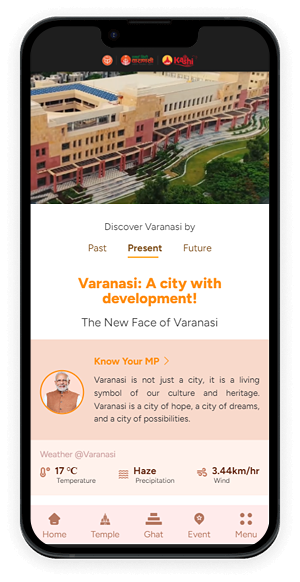रत्नेश्वर महादेव मंदिर - काशी करवट के बारे में
Step carefully, and you’ll find yourself beside the Ganga, before a leaning Shiva temple— tilted by nearly nine degrees, more than Italy’s famed tower at Pisa. Locally called Kashi karvat or leaning of Kashi’, this temple carries a story steeped in devotion—and perhaps, a curse.
Legend says a devoted servant built the temple for his mother Ratna Bai. Proud of repaying her debt, he named it after her—only for Ratna Bai to curse it, saying maternal debt is eternal. Soon, the temple began to tilt. While earlier 19th-century drawings show the temple upright, by the 20th century the lean became visible.
Built in classic Nagara style by Aman Dev near Scindia Ghat, its sanctum often remains submerged, rising and dipping with the river’s moods. Priests would dive into the water to perform rituals when the entrance was underwater. Structural experts believe the tilt arises from a weak, silted foundation, combined with years of Ganga erosion and river currents. A lightning strike in 2016 even damaged parts of the shikhara.
Despite its precarious angle, the temple’s carvings and elegant form endure. It's a photographic marvel, drawing pilgrims and visitors who see in its slant a symbol—perhaps of resilience, perhaps of humility. Here at Manikarnika Ghat, with the river lapping its base, Ratneshwar Mahadev reminds us that faith may lean, but true devotion remains upright in the heart.
प्रातः 05:00 से - रात्रि 10:30 तक
- रत्नेश्वर महादेव, मणिकर्णिका घाट, श्मशान घाट के बगल में, वाराणसी, उत्तर प्रदेश 221001







